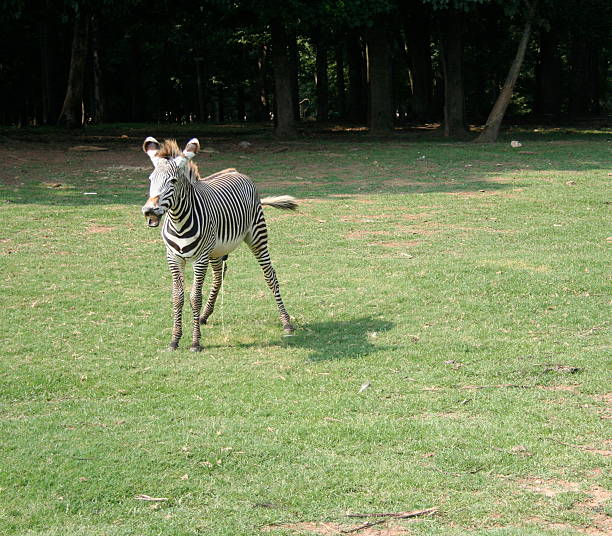Animal reaction times vary significantly across species, and the reasons for these differences are multifaceted. Reaction time, in the context of animals, refers to the speed at which an organism responds to a stimulus, be it visual, auditory, or tactile. This capability is essential for survival in many environments, enabling animals to evade predators, catch prey, or react to sudden changes in their surroundings. The variation in reaction times across species is influenced by evolutionary pressures, neurological structure, physical traits, and environmental factors. This essay will explore the factors contributing to why some animals have faster animal reaction times than others.
Evolutionary Adaptations for Survival
Predator-Prey Dynamics
One of the key reasons for faster animal reaction times is the evolutionary arms race between predators and prey. Predators rely on quick reactions to capture their prey, while prey animals need fast reflexes to avoid becoming a meal. This relationship has driven the evolution of rapid response systems in many animals.
For instance, the cheetah is known for its incredible speed, but its agility and fast reaction time are equally important. When chasing prey like gazelles, the ability to change direction and react to the movement of the prey gives it an advantage in the hunt. Conversely, the gazelle has evolved quick reflexes to detect and escape from predators, making it a worthy adversary in this life-or-death contest.
Similarly, many small prey animals, like mice, have developed lightning-fast reaction times as part of their survival toolkit. This is not just to avoid predators but also to navigate environments filled with obstacles and dangers. A slow reaction time would leave them vulnerable to both predation and accidents.
Flight or Fight Instincts
In addition to predator-prey relationships, many animals have faster animal reaction times due to the instinctive “fight or flight” response, which is deeply ingrained in their physiology. When an animal perceives a threat, the body’s sympathetic nervous system kicks into gear, preparing the animal to either flee or defend itself. This response requires rapid decision-making and reaction.
For example, the housefly, which has a reaction time much faster than humans, can detect movement with astonishing speed. This enables it to escape from threats, such as predators or humans trying to swat it. The rapid reactions of flies and similar insects are an evolved trait that increases their chances of survival in environments where danger can strike in an instant.
In larger animals, the fight-or-flight response can also trigger swift reactions. Animals like deer, for example, are highly skittish, and their fast reactions allow them to bolt at the slightest hint of danger. This is essential for animals that live in open areas, where predators can approach from any direction.
Neurological and Sensory Systems
Nervous System Complexity
A significant factor in the variation of animal reaction times is the complexity and efficiency of an animal’s nervous system. Reaction time is determined by how quickly signals can travel from the sensory organs (such as the eyes, ears, or skin) to the brain, and then how fast the brain can process this information and send instructions back to the muscles to take action.
Animals with faster animal reaction times often have more efficient nervous systems, where nerve signals can travel more quickly. This is partly due to the presence of myelin, a fatty substance that surrounds and insulates nerve fibers, allowing signals to move more rapidly. Animals that rely on speed and quick reflexes, such as predators, tend to have highly myelinated nerves, facilitating rapid signal transmission.
Additionally, some animals possess a more centralized nervous system that allows for quicker processing of sensory information. For example, cephalopods like octopuses and squids have a unique nervous system that enables them to react quickly to threats. Their decentralized neural networks allow different parts of their bodies to respond almost independently of the brain, leading to incredibly fast reaction times.
Sensory Acuity
Another contributing factor to faster animal reaction times is the sensitivity and acuity of their sensory systems. Animals that rely on their vision for survival often have eyes that can detect movement or changes in light very rapidly. For example, birds of prey like hawks and eagles have incredibly sharp vision, allowing them to detect small prey from great distances. Once they spot their target, they can react almost instantaneously to dive and catch it.
In the insect world, creatures like dragonflies have compound eyes that provide a wide field of vision and are highly sensitive to movement. This enables them to detect prey or avoid predators with extreme speed, giving them a substantial advantage in survival.
Animals that depend on hearing or touch for survival also tend to have finely tuned sensory systems. Bats, for instance, use echolocation to navigate and hunt in the dark. Their ability to process sound waves and react to changes in their environment allows them to catch insects mid-flight with remarkable precision.
Muscle Composition and Physical Traits
Fast-Twitch Muscle Fibers
Beyond neurological factors, physical characteristics also play a role in determining animal reaction times. The composition of an animal’s muscles, particularly the ratio of fast-twitch to slow-twitch muscle fibers, can significantly affect how quickly it can react. Fast-twitch muscle fibers are designed for rapid, explosive movements, while slow-twitch fibers are more suited for endurance and sustained activity.
Animals that rely on speed and agility typically have a higher proportion of fast-twitch fibers. Cheetahs, for example, have a muscular structure optimized for short bursts of high-speed chases, which includes a high density of fast-twitch muscle fibers. This allows them to not only run quickly but also to accelerate and react swiftly to changes in their environment.
Similarly, small animals like squirrels and lizards, which often need to dart away from predators or leap between trees, have muscles that are well-suited for quick, sharp movements. These animals can react in fractions of a second to avoid danger or seize an opportunity.
Body Size and Limb Length
Body size and limb length can also influence animal reaction times. In general, smaller animals tend to have faster reaction times than larger ones. This is because smaller animals typically have shorter nerve pathways, allowing signals to travel more quickly between the brain and the body. Additionally, smaller animals often need to move more quickly to evade larger predators, so their physiology has evolved accordingly.
In contrast, larger animals like elephants have slower reaction times. This is partly due to their size and the longer distances nerve signals must travel, but also because their survival strategies do not rely on rapid reactions. Instead, they depend on their size and strength to deter predators, rather than speed.
Limb length can also affect reaction time. Animals with longer limbs, such as kangaroos or giraffes, may have slower reactions due to the time it takes for nerve impulses to reach their extremities. However, their long limbs can give them other advantages, such as the ability to cover large distances with fewer strides or to deliver powerful kicks to predators.
Environmental Influences
Habitat and Lifestyle
The environment in which an animal lives plays a significant role in shaping its animal reaction times. Animals that inhabit dense, cluttered environments, such as forests or jungles, often need to navigate obstacles quickly and efficiently. This requires not only fast reactions but also precise control over movement.
For example, arboreal animals like monkeys and squirrels need to react quickly to avoid falling while moving through the trees. Their reflexes are honed by the demands of their environment, where a missed step could be fatal. Similarly, aquatic animals like fish must react swiftly to changes in water currents or the approach of predators, as the fluid dynamics of water require rapid adjustments.
In contrast, animals that live in open environments, such as deserts or plains, may not need to react as quickly to avoid obstacles, but they still require fast reactions to evade predators. Animals like antelope and zebras, which live in wide-open spaces, rely on their speed and quick reflexes to escape predators like lions or cheetahs.
Nocturnal vs. Diurnal Species
The time of day an animal is most active can also influence its animal reaction times. Nocturnal animals, which are active at night, often rely more on senses like hearing or smell rather than vision. These animals have evolved heightened sensory systems to detect predators or prey in low-light conditions, and their reaction times are often adapted to their specific sensory strengths.
For instance, owls have incredible hearing that allows them to detect the slightest movements of prey in the dark. Once they locate their target, their fast reaction times enable them to swoop down silently and capture it with deadly precision. Similarly, nocturnal predators like wolves or big cats have adapted their senses and reaction times to the challenges of hunting at night.
On the other hand, diurnal animals, which are active during the day, often have faster animal reaction times associated with their reliance on vision. Their eyes are adapted to detect motion and changes in light quickly, which helps them respond to threats or opportunities during daylight hours.
Conclusion
Faster animal reaction times are the result of a complex interplay of evolutionary pressures, neurological and sensory adaptations, physical traits, and environmental influences. Predators need quick reflexes to capture prey, while prey animals require fast reactions to avoid predators. The nervous system, muscle composition, and body size all contribute to how quickly an animal can respond to stimuli, as does the habitat in which it lives. Through millions of years of evolution, animals have developed specialized reaction times that enhance their survival and enable them to thrive in their respective environments.
click Here to visit the website





